My (non Inclusive) Top Moments In Early American History
My (non inclusive) Top Moments In Early American History
- George Washington naming his dogs shit like Sweet Lips
- Aaron Burr lighting himself on fire while trying to light a candle with a gun
- America ever winning in the revolution because we were a fucking mess
- Alexander Hamilton hiding behind Henry Knox at Yorktown when a shell burst near the tent
- Congress not finding John Adams a home in New York, forcing him to live with John Jay for like two months
- Lafayette not noticing he got shot in the leg
- John Adams taking the job of presiding over the senate seriously
- Abigail Motherfucking Adams
- Thomas Jefferson breaking his wrist trying to impress a girl
- The Hamilton family basically having three names that they rotated between kids
- Jefferson inviting Madison to come live with him at Monticello and Madison responding by basically saying he needed a year to think about it and never broaching the subject again
- Literally nobody knowing shit about Monroe
- Hamilton making a bet that he would buy dinner for a dozen delegates at the Constitutional Convention if Gouverneur Morris went up and clapped Washington on the back, which he did, and was subsequently given a glare that made him want to sink into the floor
- Washington actually cutting down two cherry trees
- Admiral de Grasse calling Washington “mon cher petit général”
- Aaron Burr trying to annex Texas and being tried for treason
- the Merry Affair
- Thomas Jefferson procrastinating in calling in Virginia militia, which forced him to flee Richmond when Benedict Arnold swept the capital
- “One hundred and eighty miles in three days and a half. It does admirable credit to the activity of a man at his time of life.” - Alexander Hamilton talking about Horatio Gates abandoning his army at Camden
- Baron Von Stueben showing up at Valley Forge with an Italian greyhound and his gaggle of little French boyfriends
- Baron Von Stueben cussing out the soldiers in French, leaving Hamilton and Laurens to translate
- Baron Von Steuben
- Jefferson being given a 1000 pound wheel of cheese, which no “federalist cows” were allowed to contribute to
- Jefferson having basically a burn book called “Anas”
More Posts from Paranoid0peach and Others
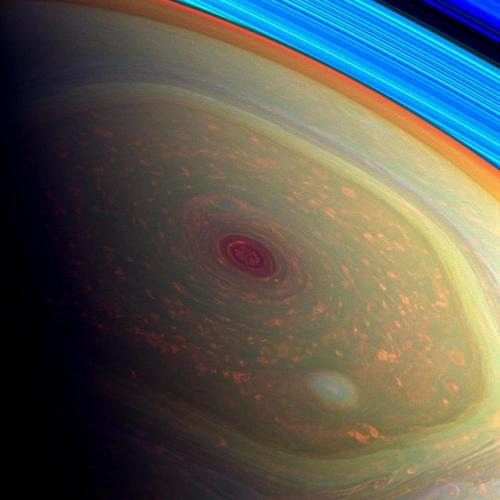
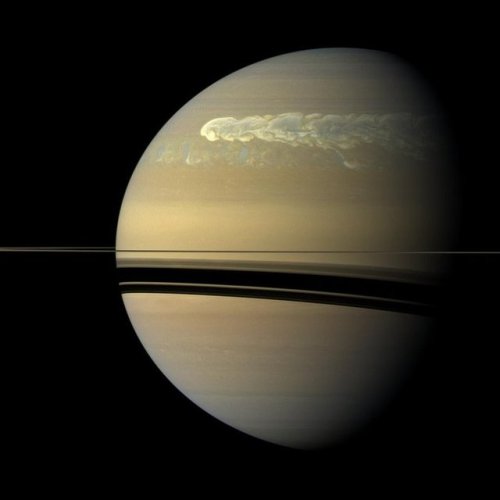
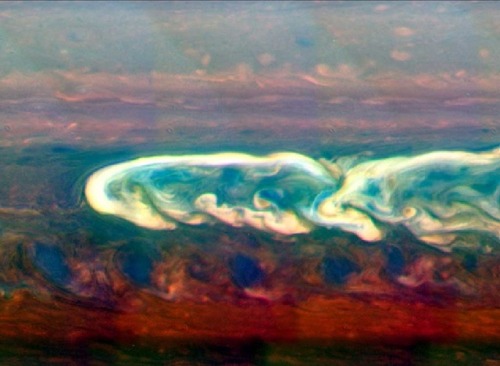



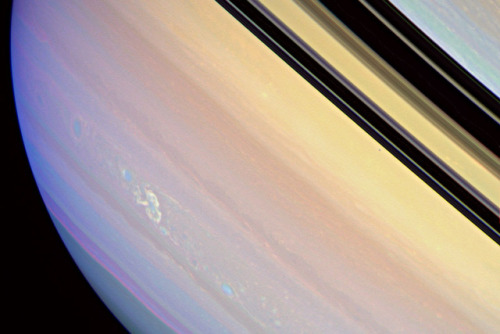

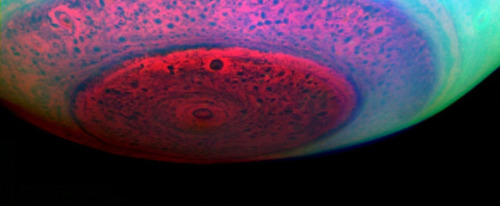
Saturn’s atmosphere exhibits a banded pattern similar to Jupiter’s, but Saturn’s bands are much fainter and are much wider near the equator. The nomenclature used to describe these bands is the same as on Jupiter. Saturn’s finer cloud patterns were not observed until the flybys of the Voyager spacecraft during the 1980s. Since then, Earth-based telescopy has improved to the point where regular observations can be made. The composition of the clouds varies with depth and increasing pressure.
The winds on Saturn are the second fastest among the Solar System’s planets, after Neptune’s. Voyager data indicate peak easterly winds of 500 m/s (1,800 km/h).
Thermography has shown that Saturn’s south pole has a warm polar vortex, the only known example of such a phenomenon in the Solar System. Whereas temperatures on Saturn are normally −185 °C, temperatures on the vortex often reach as high as −122 °C, suspected to be the warmest spot on Saturn.
Credit: NASA/JPL-Caltech/Space Science Institute and Kevin M. Gill
Greatest Hits — Craters We Love
Our solar system was built on impacts — some big, some small — some fast, some slow. This week, in honor of a possible newly-discovered large crater here on Earth, here’s a quick run through of some of the more intriguing impacts across our solar system.
1. Mercury: A Basin Bigger Than Texas

Mercury does not have a thick atmosphere to protect it from space debris. The small planet is riddled with craters, but none as spectacular as the Caloris Basin. “Basin” is what geologists call craters larger than about 186 miles (300 kilometers) in diameter. Caloris is about 950 miles (1,525 kilometers) across and is ringed by mile-high mountains.
For scale, the state of Texas is 773 miles (1,244 kilometers) wide from east to west.
2. Venus: Tough on Space Rocks

Venus’ ultra-thick atmosphere finishes off most meteors before they reach the surface. The planet’s volcanic history has erased many of its craters, but like almost any place with solid ground in our solar system, there are still impact scars to be found. Most of what we know of Venus’ craters comes from radar images provided by orbiting spacecraft, such as NASA’s Magellan.
Mead Crater is the largest known impact site on Venus. It is about 170 miles (275 kilometers) in diameter. The relatively-flat, brighter inner floor of the crater indicates it was filled with impact melt and/or lava.
3. Earth: Still Craters After All These Years

Evidence of really big impacts — such as Arizona’s Meteor Crater — are harder to find on Earth. The impact history of our home world has largely been erased by weather and water or buried under lava, rock or ice. Nonetheless, we still find new giant craters occasionally.
A NASA glaciologist has discovered a possible impact crater buried under more than a mile of ice in northwest Greenland.
This follows the finding, announced in November 2018, of a 19-mile (31-kilometer) wide crater beneath Hiawatha Glacier – the first meteorite impact crater ever discovered under Earth’s ice sheets.
If the second crater, which has a width of over 22 miles (35 kilometers), is ultimately confirmed as the result of a meteorite impact, it will be the 22nd largest impact crater found on Earth.
4. Moon: Our Cratered Companion

Want to imagine what Earth might look like without its protective atmosphere, weather, water and other crater-erasing features? Look up at the Moon. The Moon’s pockmarked face offers what may be humanity’s most familiar view of impact craters.
One of the easiest to spot is Tycho, the tight circle and bright, radiating splat are easy slightly off center on the lower-left side of the full moon. Closer views of the 53-mile (85 kilometer)-wide crater from orbiting spacecraft reveal a beautiful central peak, topped with an intriguing boulder that would fill about half of a typical city block.
5. Mars: Still Taking Hits

Mars has just enough atmosphere to ensure nail-biting spacecraft landings, but not enough to prevent regular hits from falling space rocks. This dark splat on the Martian south pole is less than a year old, having formed between July and September 2018. The two-toned blast pattern tells a geologic story. The larger, lighter-colored blast pattern could be the result of scouring by winds from the impact shockwave on ice. The darker-colored inner blast pattern is because the impactor penetrated the thin ice layer, blasting the dark sand underneath in all directions.
6. Ceres: What Lies Beneath

The bright spots in Ceres’ Occator crater intrigued the world from the moment the approaching Dawn spacecraft first photographed it in 2015. Closer inspection from orbit revealed the spots to be the most visible example of hundreds of bright, salty deposits that decorate the dwarf planet like a smattering of diamonds. The science behind these bright spots is even more compelling: they are mainly sodium carbonate and ammonium chloride that somehow made their way to the surface in a slushy brine from within or below the crust. Thanks to Dawn, scientists have a better sense of how these reflective areas formed and changed over time — processes indicative of an active, evolving world.
7. Comet Tempel 1: We Did It!

Scientists have long known we can learn a lot from impact craters — so, in 2005, they made one themselves and watched it happen.
On July 4, 2005, NASA’s Deep Impact spacecraft trained its instruments on an 816-pound (370-kilogram) copper impactor as it smashed into comet Tempel 1.
One of the more surprising findings: The comet has a loose, “fluffy” structure, held together by gravity and contains a surprising amount of organic compounds that are part of the basic building blocks of life.
8. Mimas: May the 4th Be With You

Few Star Wars fans — us included — can resist Obi Wan Kenobi’s memorable line “That’s no moon…” when images of Saturn’s moon Mimas pop up on a screen. Despite its Death Star-like appearance, Mimas is most definitely a moon. Our Cassini spacecraft checked, a lot — and the superlaser-looking depression is simply an 81-mile (130-kilometer) wide crater named for the moon’s discoverer, William Herschel.
9. Europa: Say What?

The Welsh name of this crater on Jupiter’s ocean moon Europa looks like a tongue-twister, but it is easiest pronounced as “pool.” Pwyll is thought to be one of the youngest features we know of on Europa. The bright splat from the impact extends more than 600 miles (about 1,000 kilometers) around the crater, a fresh blanket over rugged, older terrain. “Fresh,” or young, is a relative term in geology; the crater and its rays are likely millions of years old.
10. Show Us Your Greatest Hits

Got a passion for Stickney, the dominant bowl-shaped crater on one end of Mars’ moon Phobos? Or a fondness for the sponge-like abundance of impacts on Saturn’s battered moon Hyperion (pictured)? There are countless craters to choose from. Share your favorites with us on Twitter, Instagram and Facebook.
Make sure to follow us on Tumblr for your regular dose of space: http://nasa.tumblr.com
When Gaius Julius Caesar got abducted by pirates in 78 BC he doubled the ransom demand because he thought he was worth it.
That’s the kind of self esteem I aim for.
Here’s a list of books and movies that have been alluded to in WINGS and You Never Walk Alone so far.
BOOKS
Demian: The Story of Emil Sinclair’s Youth (1919, Herman Hesse) Inspiration for the short films, MV and concept during WINGS era.

The Ones Who Walk Away from Omelas (1973, Ursula Le Guin) Inspiration for Spring Day.

The Owl Service (1967, Alan Garner) Subtle references for the concept photos for You Never Walk Alone and Short Film #2 LIE

MOVIES
The Chatroom (2010) Alluded to in Blood Sweat & Tears and the WINGS Tour Trailer

No Vacancy (2012) Alluded to in Spring Day

Snowpiercer (2013) Some of the lyrics and scenes from the MV are inspired by Snowpiercer. It’s about the remainder of humanity surviving on a train as there is a new ice age (caused by global warming).


On this day in 2006, Pluto was reclassified as a dwarf planet!


Two of my favorite pieces of art
(My first favorite is The Last Supper)


minho’s reaction after stylist said he looks like a grandma with that hair
BNHA - Space (symbolism) Edition
So @saisai-chan and I were talking about awesome space stuff and it bled into talking about BNHA, which led to this - BNHA characters as symbolic celestial *SPACE* objects. We’re just… Really enthusiastic about space…..
All Might - Sun. Center of everything, provides life/energy to the solar system, largest celestial body in solar system. (All Might’s influence.) Also protects the solar system from objects from outside the system. (Again, his influence, symbol of peace, number one hero)
Midoriya Izuku - Earth. Has life on the planet, the only planet bestowed with life thanks to the sun. (KINDA LIKE… ONE FOR ALL)
Bakugou Katsuki - Venus. Zero chill, greenhouse effect, VOLCANOES EVERYWHERE (which contributes to erosion and therefore makes the surface very “new” - lowkey nod to Mama Bakugou’s quirk glycerin, making her eternally youthful), atmosphere that burns up pretty much everything before it can actually hit Venus’ surface (kinda like how Bakugou doesn’t really get close to people that much; they are often repelled/intimidated by his attitude). Secondary Atmosphere is almost entirely CO2 - because its temperatures are so high, water could never condense and bring CO2 to the crust. Venus never underwent the change that Earth and Mars had, remaining as it did with greenhouse effect => high temperatures; it never cooled off. (Bakugou is stubborn, change is very slow, still hot-headed with zero-chill af)
Uraraka Ochako - Saturn. Lots of gravity, really pretty to look at, can float on water (average density is less than water).
Todoroki Shouto - Mars. Cold and Red, Mars had a secondary atmosphere like Earth’s at one point - lost Primary Atmosphere like all the terrestrials, gained a secondary like Earth’s (caused by water condensing and falling to the crust, bringing CO2 with it). Suspected to have been substantially warmer earlier on in its life. As its core continues to cool, the planet itself cools.
Kaminari Denki - Uranus. Only planet that’s tilted on its side (he’s a dork), looks plain and boring but actually isn’t. (Kaminari seems like a joke character at first but hey! He has a personality too, has friends, cares about them, will defend them. He’s more complex than he looks, even though it isn’t much) Also, storm planet. (Electricity, lightning. Fire + wind, Bakugou and Kaminari)
Kirishima Eijirou - Neptune. Water planet, a pair with Uranus. (Kinda like a complimentary opposite of venus - water + lava (from venus) makes land, land = life (Bakugou, Kirishima, and Kaminari), goes from Raging Inferno to HOPE.)
Tokoyami Fumikage - Pluto probably. Because it’s the edgiest celestial body in our solar system, furthest from the sun (darkness aesthetic). Has a giant heart-shaped mark on its surface. (He’s a dork and not nearly as cool and edgy as he thinks.)
Todoroki Enji - Jupiter. Second largest object in the solar system, right behind mars, separated by asteroid belt. Extreme pressure (expectations on others/daunting presence) and multiple natural satellites (his own following, influence in the world). Big Red Spot. Jupiter’s coriolis effect/numerous wind cells (this guy has some inner conflicts and issues, man). Protects the Earth and inner planets but also kinda directs some asteroids towards us.
Todoroki’s Mom - Frost Line. (FROST. ICE QUIRK.) Located in the Asteroid Belt, not an actual object (we’ve only seen her, like, twice? She is Elusive), but a distance from the sun, separation between the terrestrials and Jovians. SEPARATES MARS FROM JUPITER. (she tried to protect Todoroki from Enji before)
Midoriya Inko - Ceres. Dwarf Planet, named after goddess of fertility and motherhood. (kind of out there away from the focal point; a little forgotten sometimes but also not)
Izumi Kouta - Moon. Created literally after a celestial object collided with earth. (“sorry I punched you in the dick”) Controls the tides (Kouta controls water)
Shigaraki Tomura - Mercury. Fully-formed planet before, but as it died, it’s liquid core shrank - causing wrinkles on its surface as the crust collapsed on itself. Dead, metal, and flakey. (His wrinkles. He could have had a bright future, but it died.) BUT ALSO NOT AS DEAD AS WE THOUGHT. Literally a recent finding. (Still has surprises for us, he is still a Mystery)
AfO - Black Hole. (Maybe his brother = a smaller star that turned into a white dwarf, while he = a black hole.) Giant black hole at the center of the Milky Way. (headcanon, but AfO is integrated in society in various ways without the government/hero associations knowing. He is old and influential, is a massive force. Like a black hole at the center of the galaxy)
Villains/League of Villains - Oort Cloud. Cluster of debris that surrounds the solar system; is kept at the far reaches of it. (Villains are the rejects of society, they try to stay as far away from All Might as possible)
Other students in Yuuei - Asteroid Belt.
Yuuei/Japan - Solar System. (has all of this stuff)
EXCERPT FROM CHAT (b/c I think it’s funny):
saisai-chan: YE AH i imagine the solar system is like either UA or japan specifically since AFO is the giant black hole at the center of the galaxy athanatosora: And honestly, AfO at the center - I have seen and have too many headcanons that he is integrated in society in various ways without the heroes knowing. He is too old and influential to not be saisai-chan: so he has influence all around athanatosora: YEAH saisai-chan: YEAH
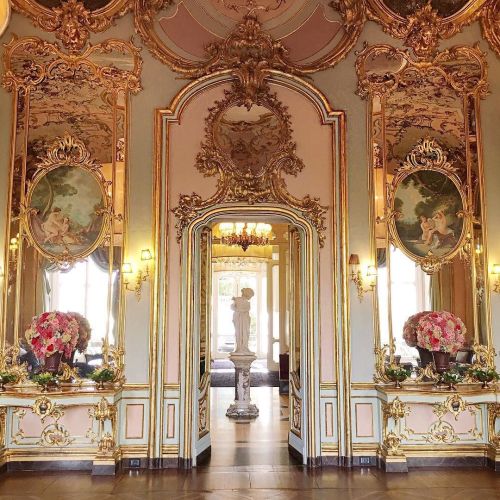
Oh so feminine details. Such a dream! Here’s a snap of my favorite corner in our hotel here in Florence!! Sad to be leaving but excited to head to Rome! 💗 #Italy #pink #firenze4ever by rachparcell
-
 adoltery liked this · 2 months ago
adoltery liked this · 2 months ago -
 fandombead reblogged this · 2 months ago
fandombead reblogged this · 2 months ago -
 without-him liked this · 4 months ago
without-him liked this · 4 months ago -
 ladylolalilly liked this · 5 months ago
ladylolalilly liked this · 5 months ago -
 ladylolalilly reblogged this · 5 months ago
ladylolalilly reblogged this · 5 months ago -
 imthed0ctor liked this · 7 months ago
imthed0ctor liked this · 7 months ago -
 sourfar reblogged this · 1 year ago
sourfar reblogged this · 1 year ago -
 sourfar liked this · 1 year ago
sourfar liked this · 1 year ago -
 laurenshamiltonjr liked this · 1 year ago
laurenshamiltonjr liked this · 1 year ago -
 pickled-platypus liked this · 1 year ago
pickled-platypus liked this · 1 year ago -
 ready4nothing liked this · 1 year ago
ready4nothing liked this · 1 year ago -
 book-worm-forever liked this · 1 year ago
book-worm-forever liked this · 1 year ago -
 culpeppercheckers721 liked this · 1 year ago
culpeppercheckers721 liked this · 1 year ago -
 chevi46772 liked this · 1 year ago
chevi46772 liked this · 1 year ago -
 chestercatoon liked this · 1 year ago
chestercatoon liked this · 1 year ago -
 chaotic-history liked this · 1 year ago
chaotic-history liked this · 1 year ago -
 bluetiger3000 liked this · 1 year ago
bluetiger3000 liked this · 1 year ago -
 gssksgsinballsskiskshssn liked this · 1 year ago
gssksgsinballsskiskshssn liked this · 1 year ago -
 sawoqa liked this · 1 year ago
sawoqa liked this · 1 year ago -
 martianbugsbunny liked this · 1 year ago
martianbugsbunny liked this · 1 year ago -
 stormychameleon reblogged this · 1 year ago
stormychameleon reblogged this · 1 year ago -
 stormychameleon liked this · 1 year ago
stormychameleon liked this · 1 year ago -
 nothingfrompoland liked this · 1 year ago
nothingfrompoland liked this · 1 year ago -
 marsfingershurt liked this · 1 year ago
marsfingershurt liked this · 1 year ago -
 mossbiin liked this · 1 year ago
mossbiin liked this · 1 year ago -
 lamsisreal liked this · 1 year ago
lamsisreal liked this · 1 year ago -
 darkoplayzzz liked this · 1 year ago
darkoplayzzz liked this · 1 year ago -
 valleyforgery reblogged this · 1 year ago
valleyforgery reblogged this · 1 year ago -
 valleyforgery liked this · 1 year ago
valleyforgery liked this · 1 year ago -
 sparkleylittlepoo reblogged this · 1 year ago
sparkleylittlepoo reblogged this · 1 year ago -
 sparkleylittlepoo liked this · 1 year ago
sparkleylittlepoo liked this · 1 year ago -
 hayuki-marina liked this · 1 year ago
hayuki-marina liked this · 1 year ago -
 schnitzelsemmerl reblogged this · 1 year ago
schnitzelsemmerl reblogged this · 1 year ago -
 schnitzelsemmerl liked this · 1 year ago
schnitzelsemmerl liked this · 1 year ago -
 hamiltonswiftie liked this · 1 year ago
hamiltonswiftie liked this · 1 year ago -
 artistictiana liked this · 1 year ago
artistictiana liked this · 1 year ago -
 saint-petah-the-good liked this · 1 year ago
saint-petah-the-good liked this · 1 year ago -
 fandomhungryuwu reblogged this · 1 year ago
fandomhungryuwu reblogged this · 1 year ago -
 fandomhungryuwu liked this · 1 year ago
fandomhungryuwu liked this · 1 year ago -
 viellohi liked this · 1 year ago
viellohi liked this · 1 year ago -
 livelaughlovelams reblogged this · 1 year ago
livelaughlovelams reblogged this · 1 year ago -
 livelaughlovelams liked this · 1 year ago
livelaughlovelams liked this · 1 year ago -
 purple-petrichor liked this · 1 year ago
purple-petrichor liked this · 1 year ago -
 lulu-remz liked this · 1 year ago
lulu-remz liked this · 1 year ago -
 sincerelythee reblogged this · 1 year ago
sincerelythee reblogged this · 1 year ago -
 thepolyamorouspolymath reblogged this · 1 year ago
thepolyamorouspolymath reblogged this · 1 year ago -
 fullofobsessions liked this · 1 year ago
fullofobsessions liked this · 1 year ago -
 gilglirthemaia liked this · 1 year ago
gilglirthemaia liked this · 1 year ago -
 violetspots-2007 liked this · 1 year ago
violetspots-2007 liked this · 1 year ago -
 withthefrizznoway liked this · 1 year ago
withthefrizznoway liked this · 1 year ago